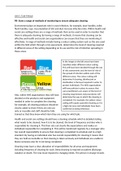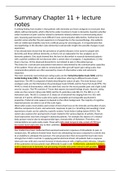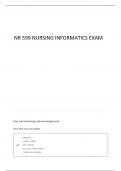Essay
Unit 5- Task 4
- Module
- Unit 5 - Infection control
- Institution
- OCR
P8- state a range of methods of monitoring to ensure adequate cleaning P9- describe how a health and social care worker should manage themselves to prevent the spread of infection P10- Explain the importance of following policies and procedures to ensure effective infection control M4- Explain t...
[Show more]







